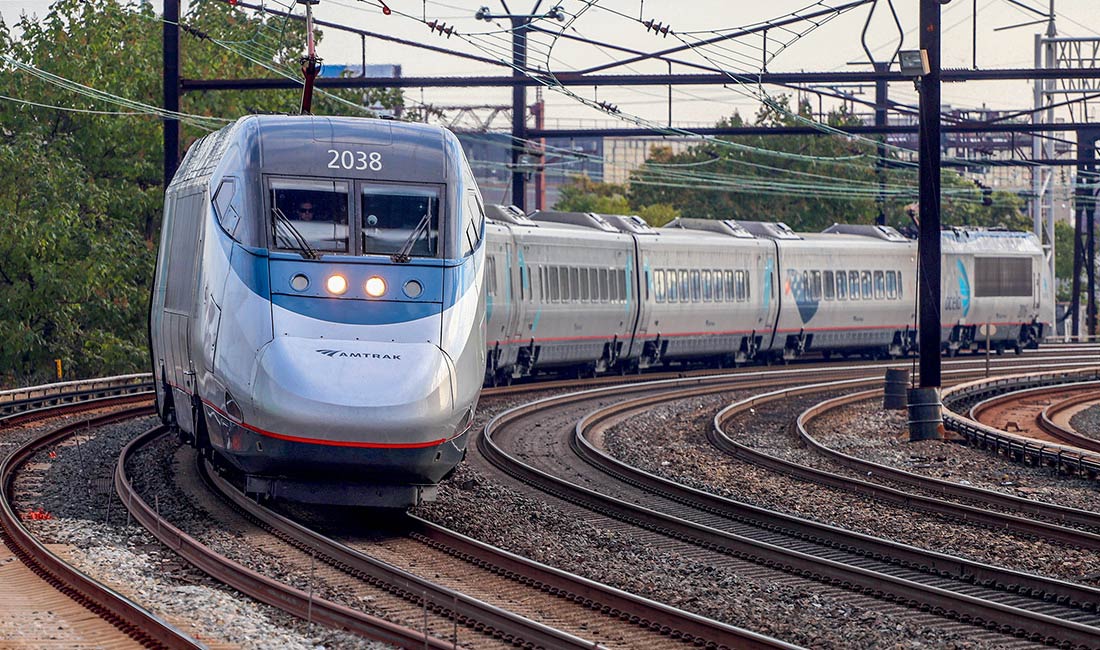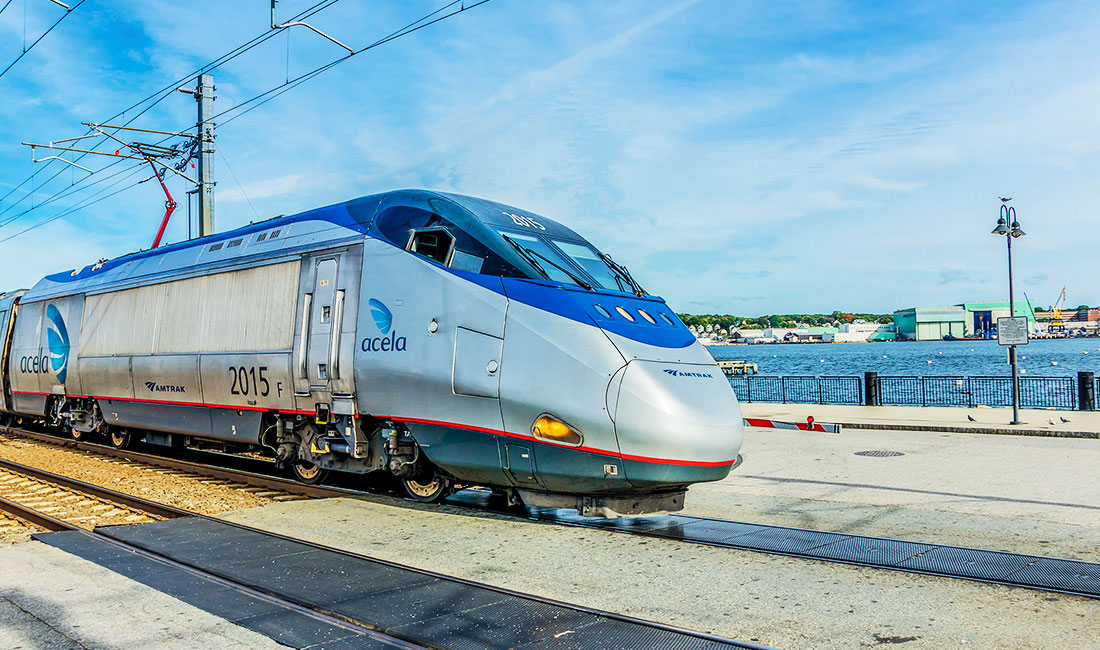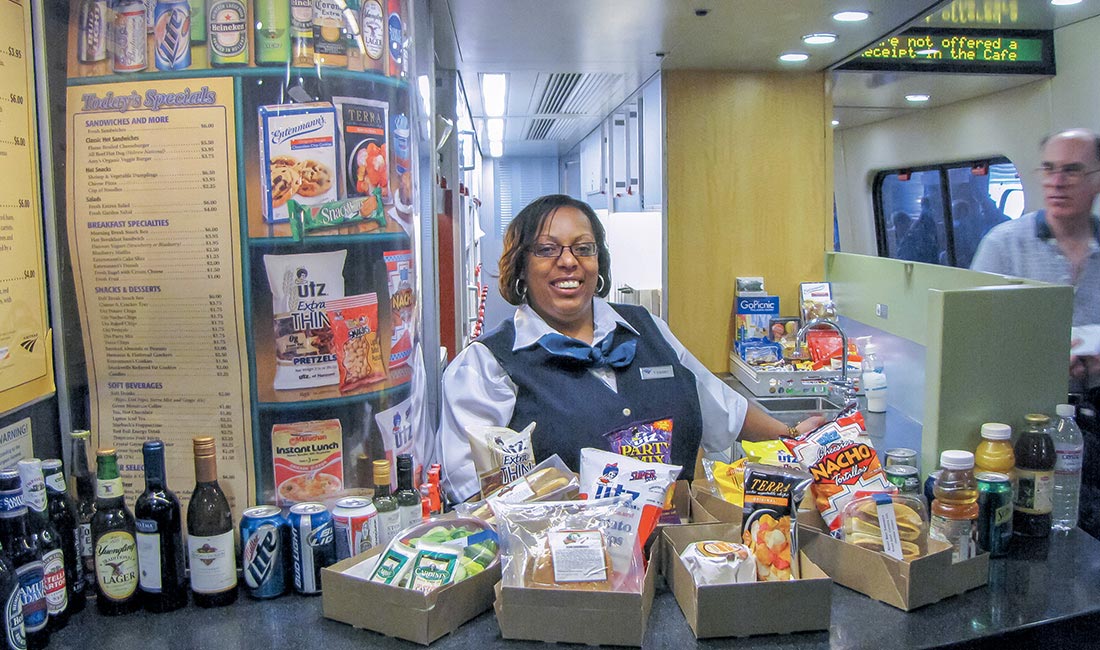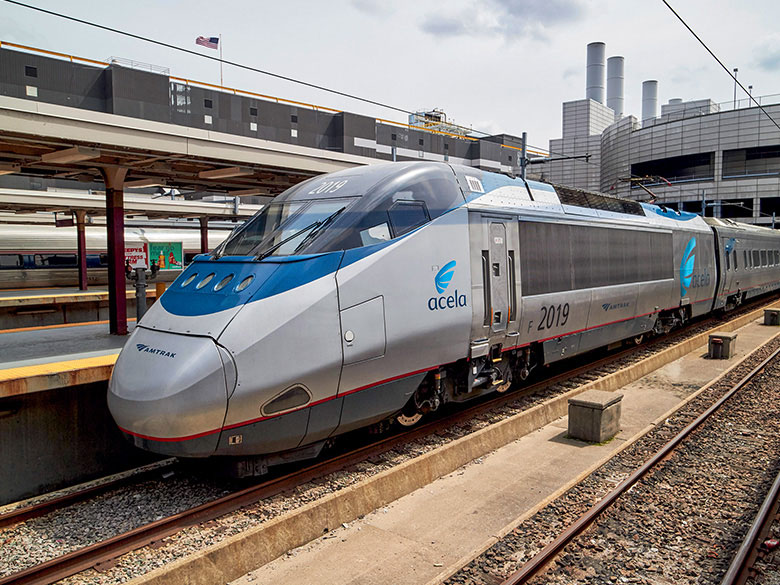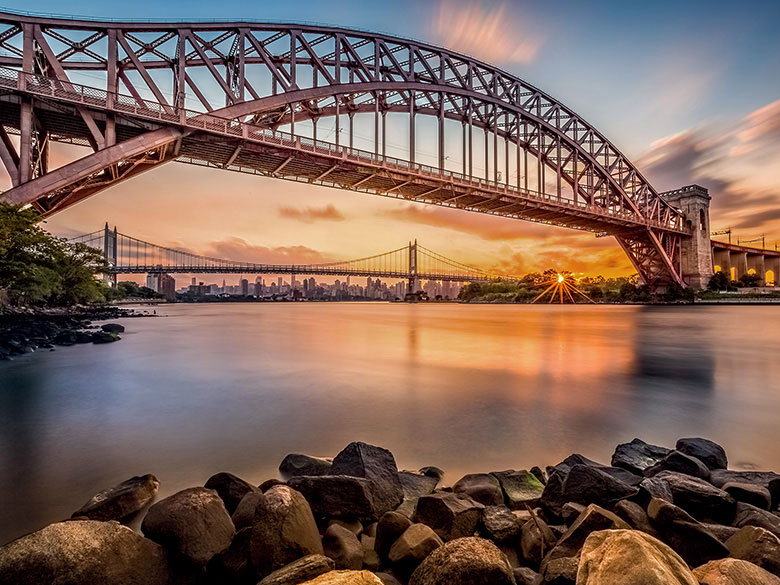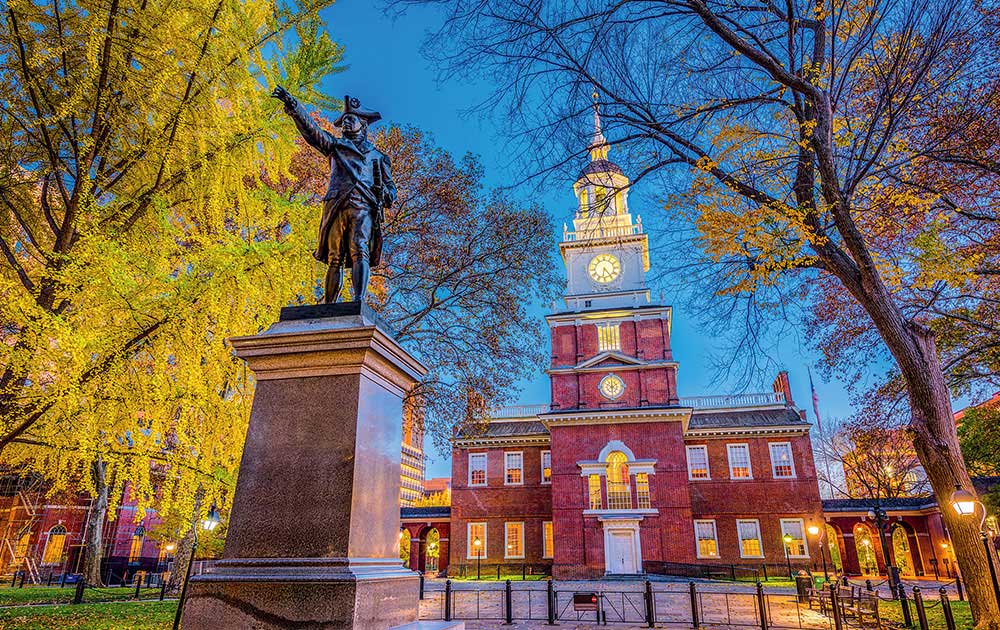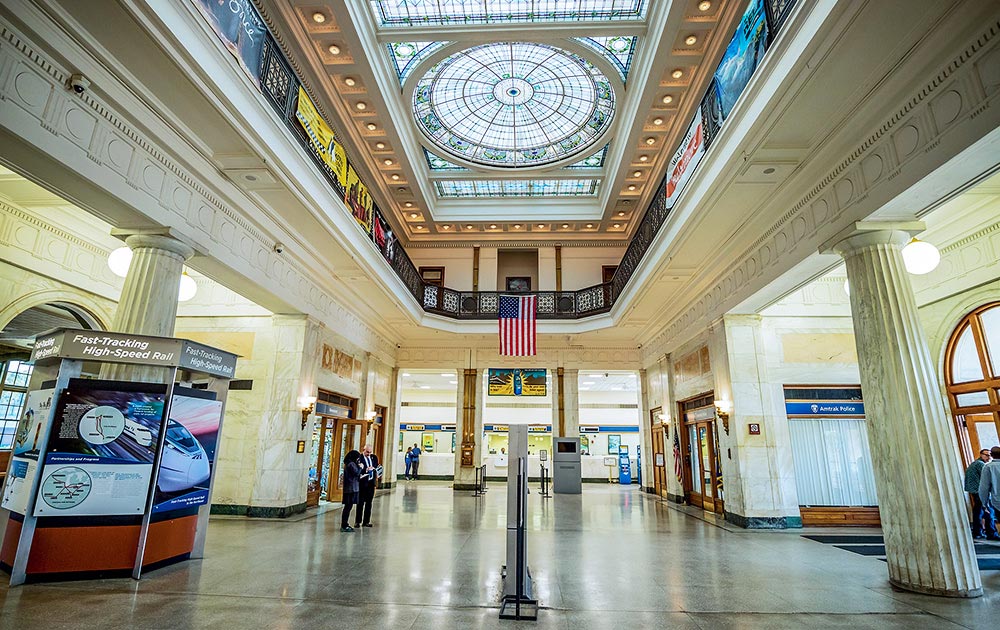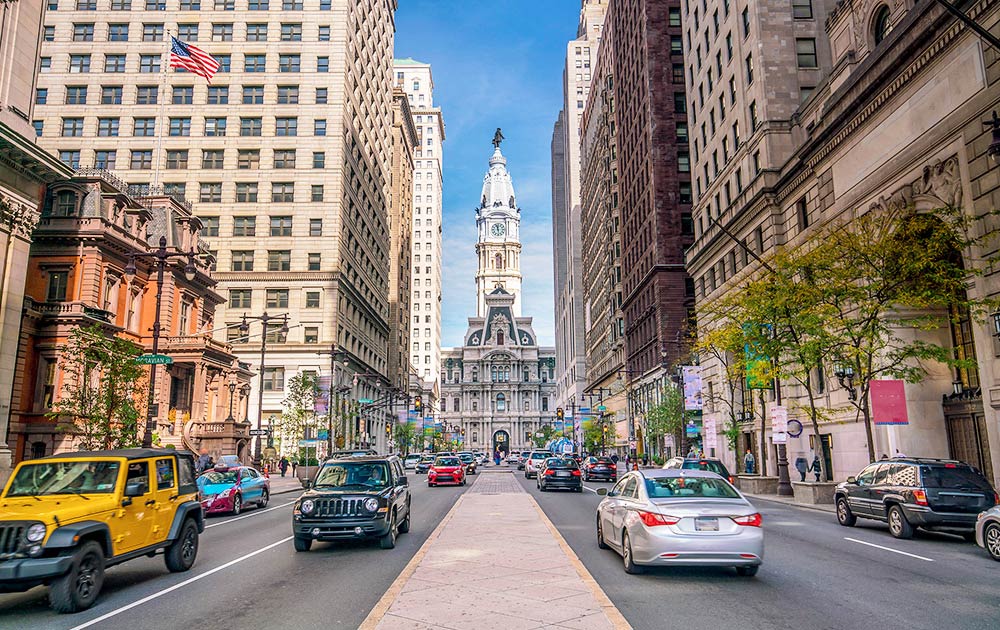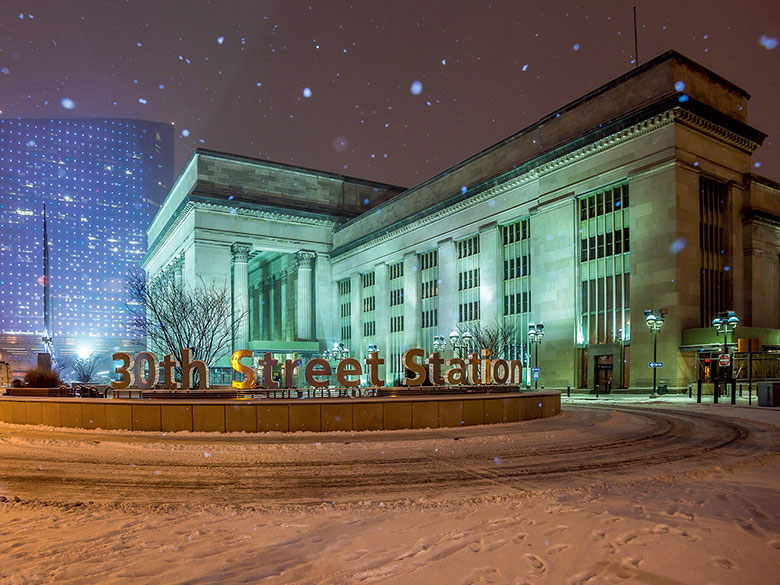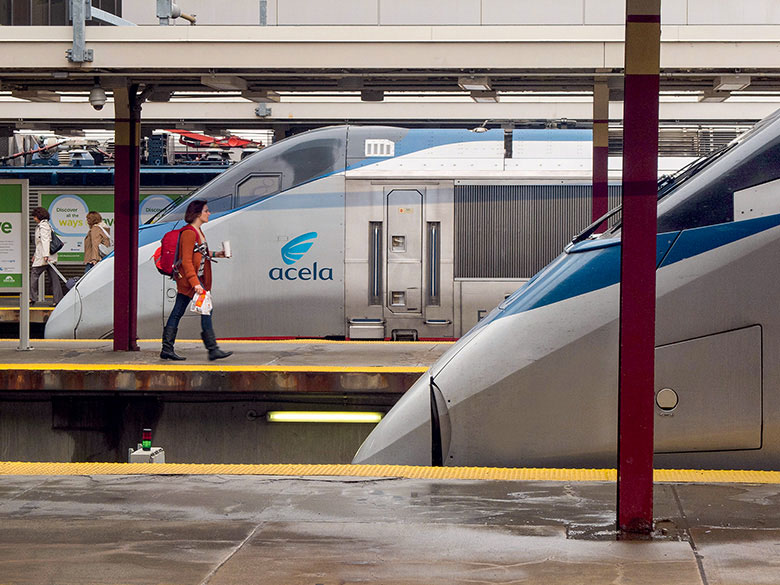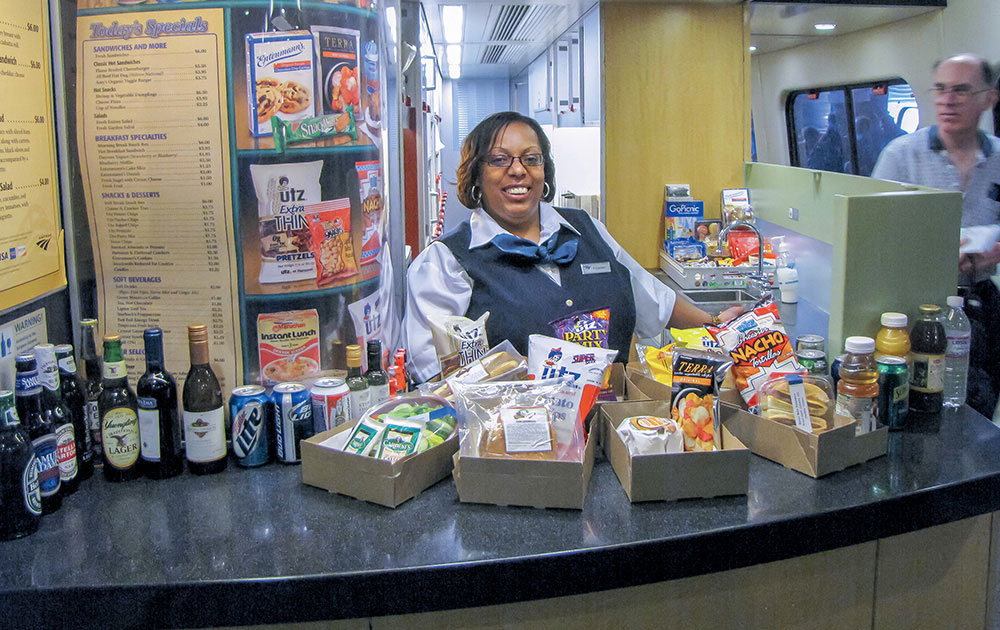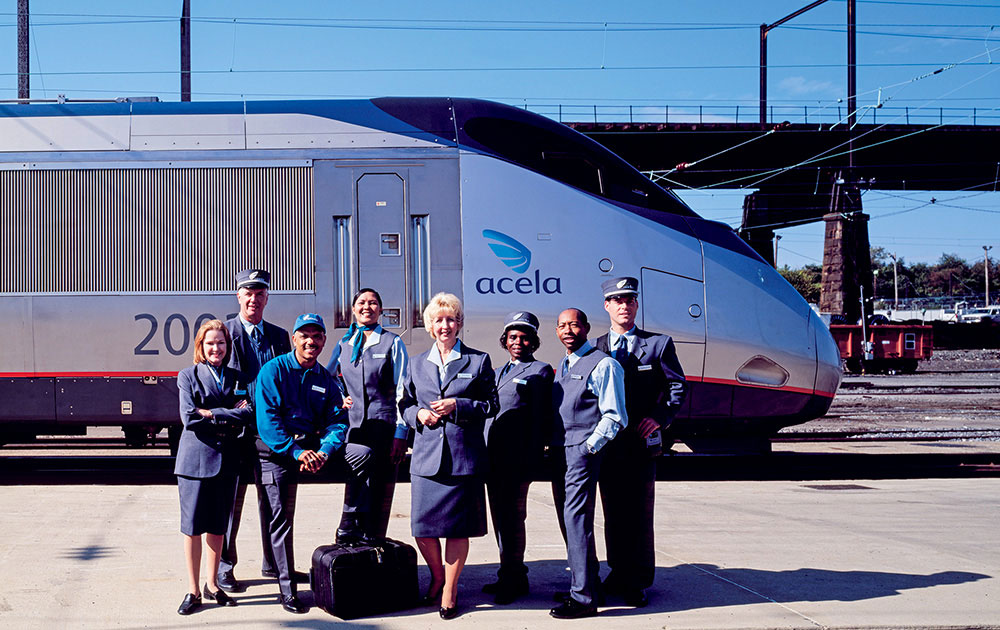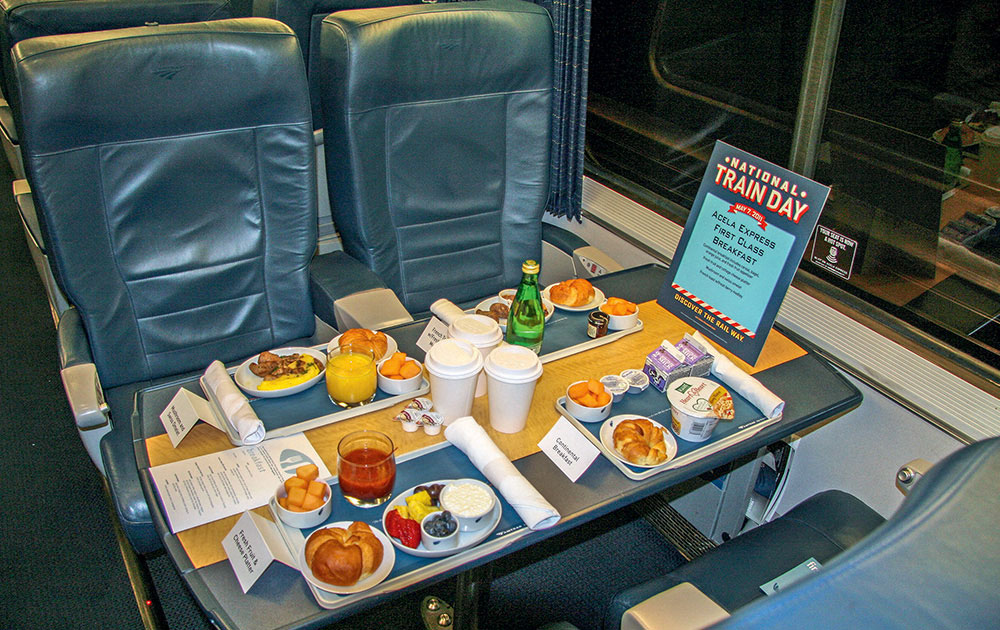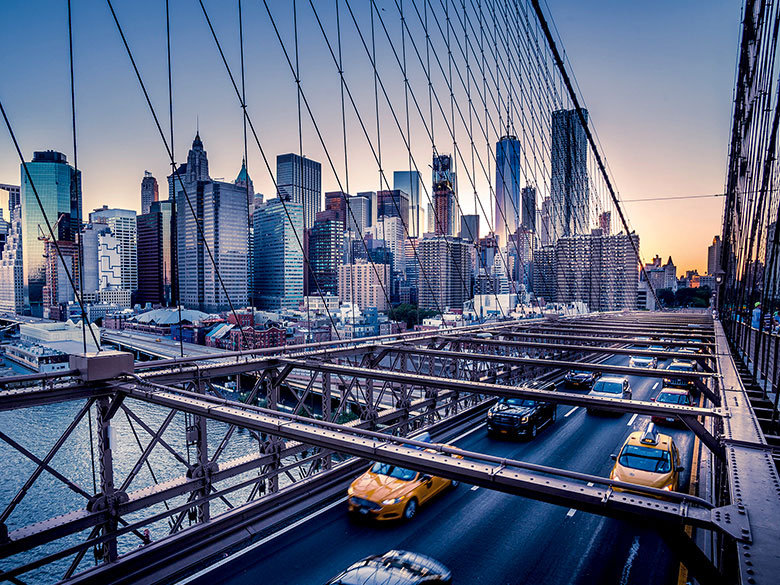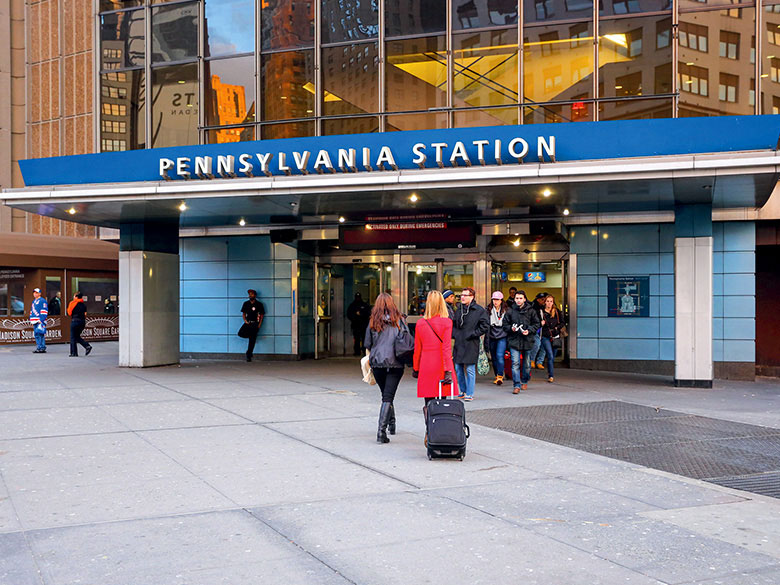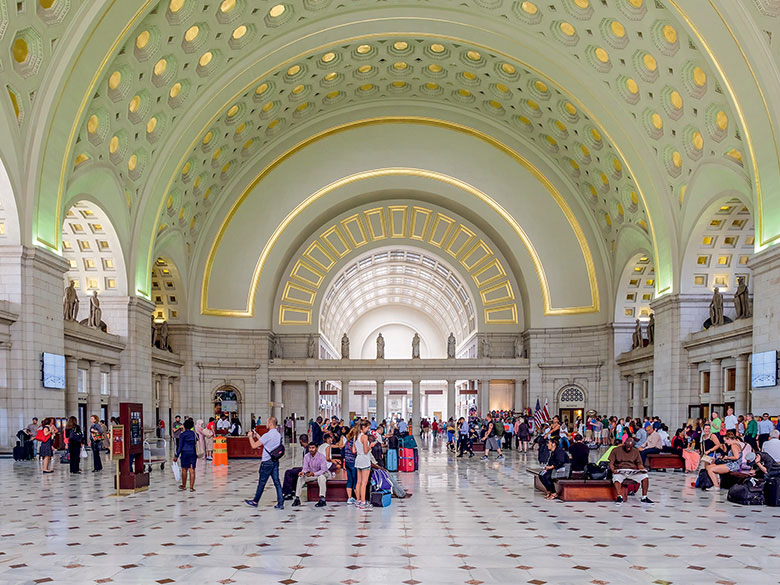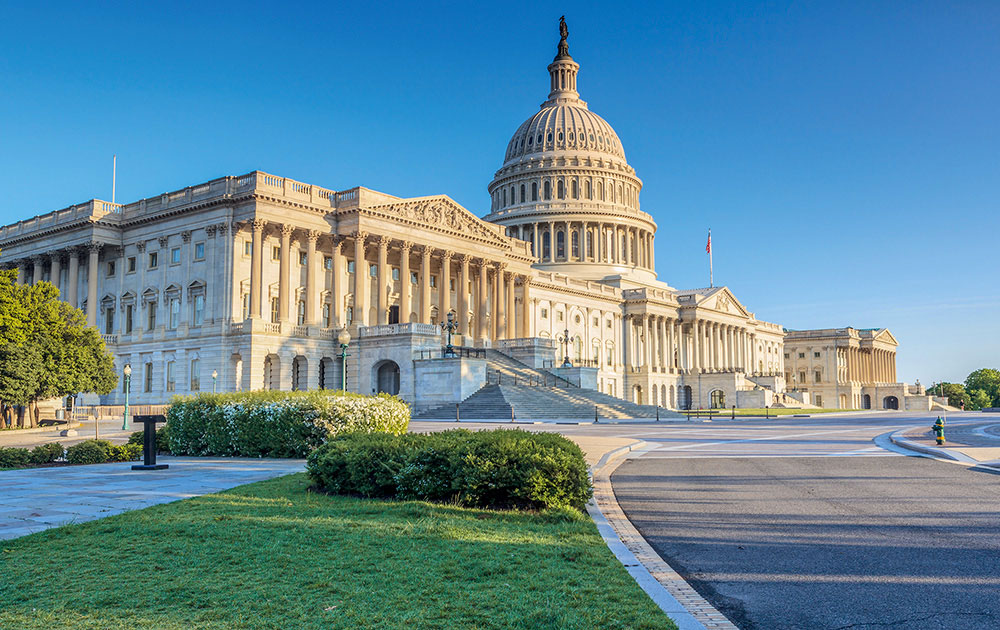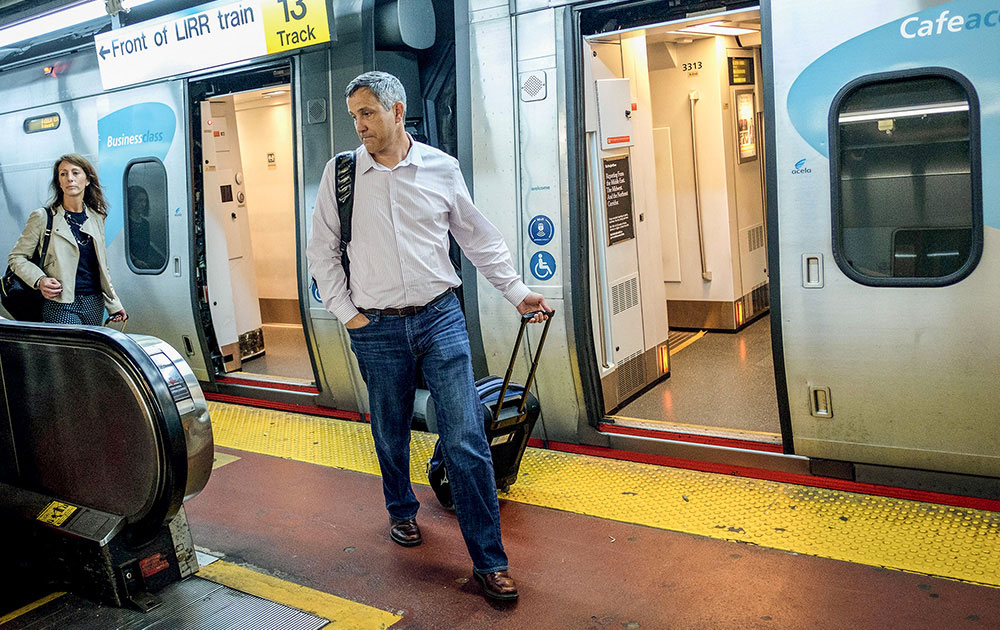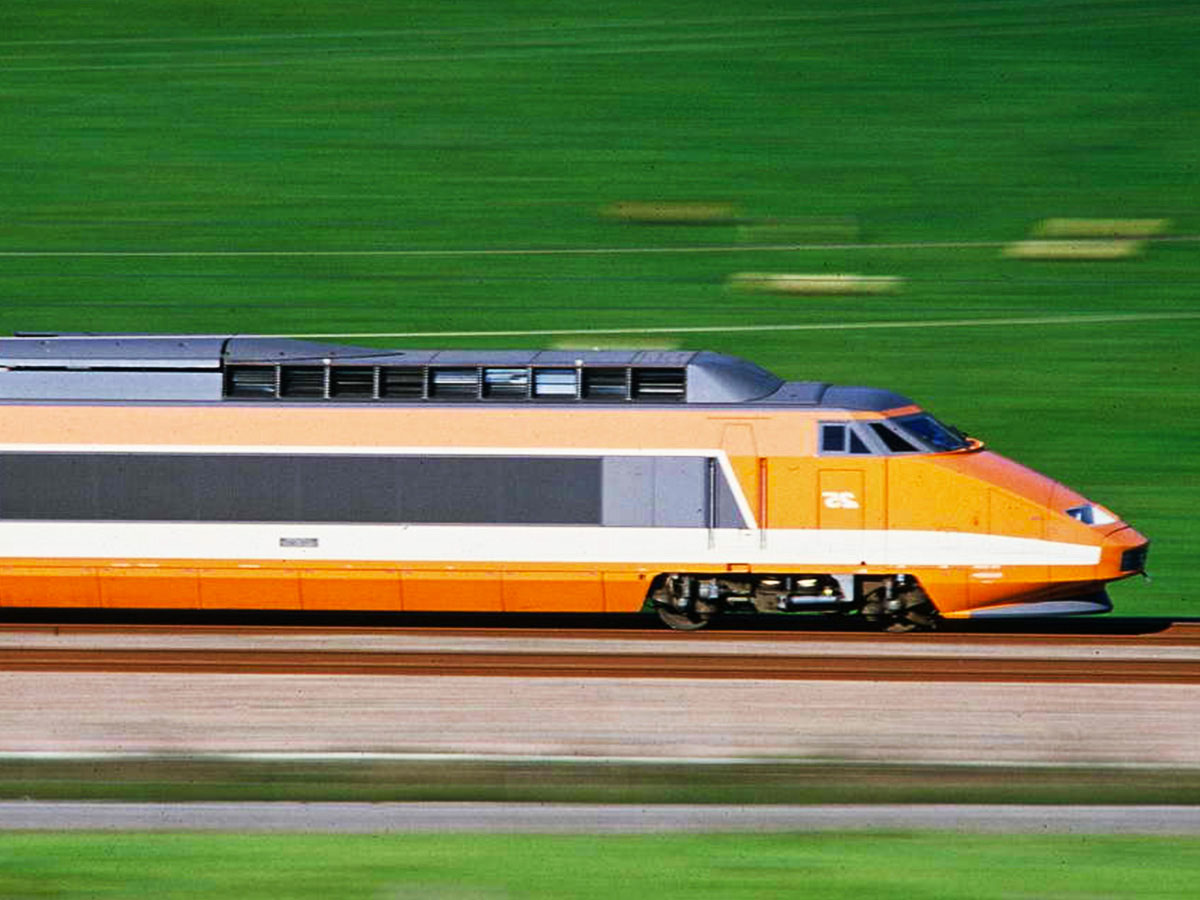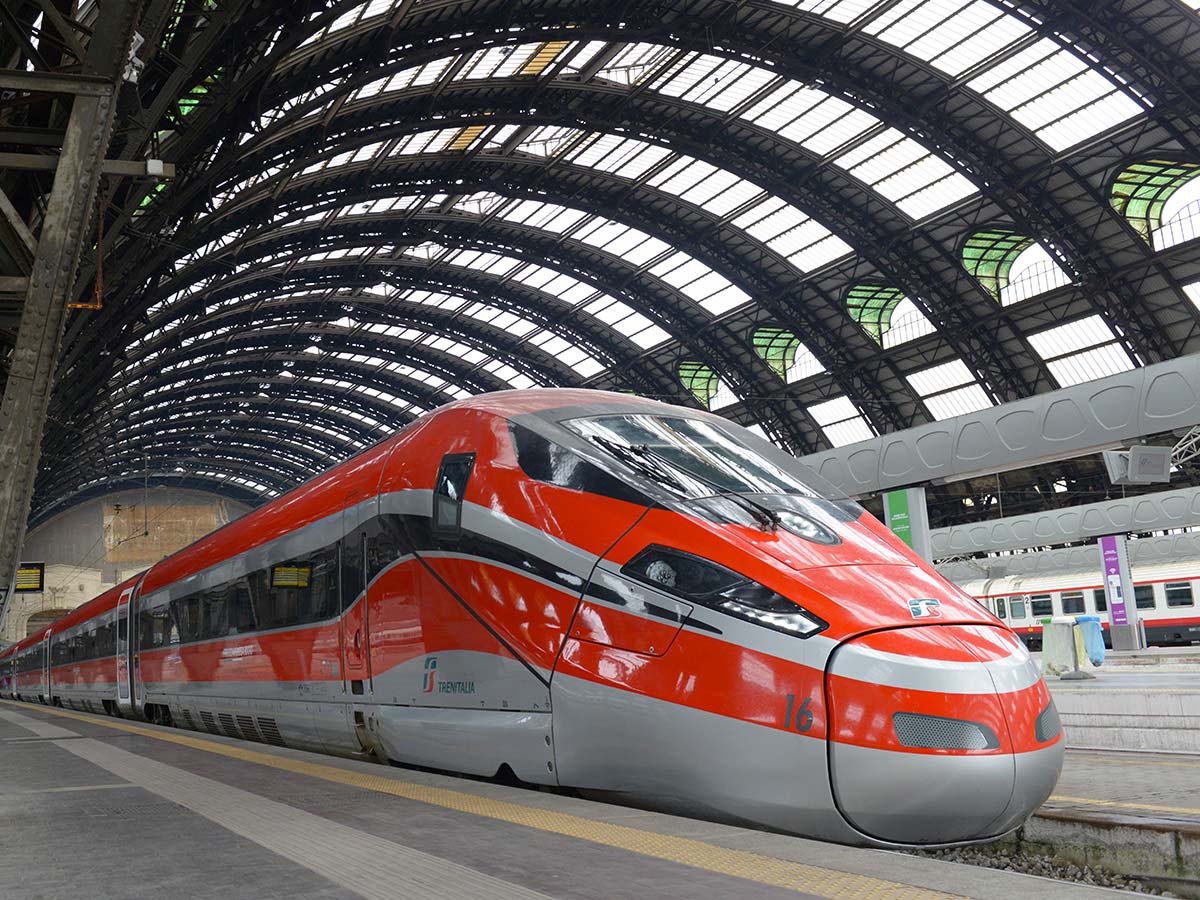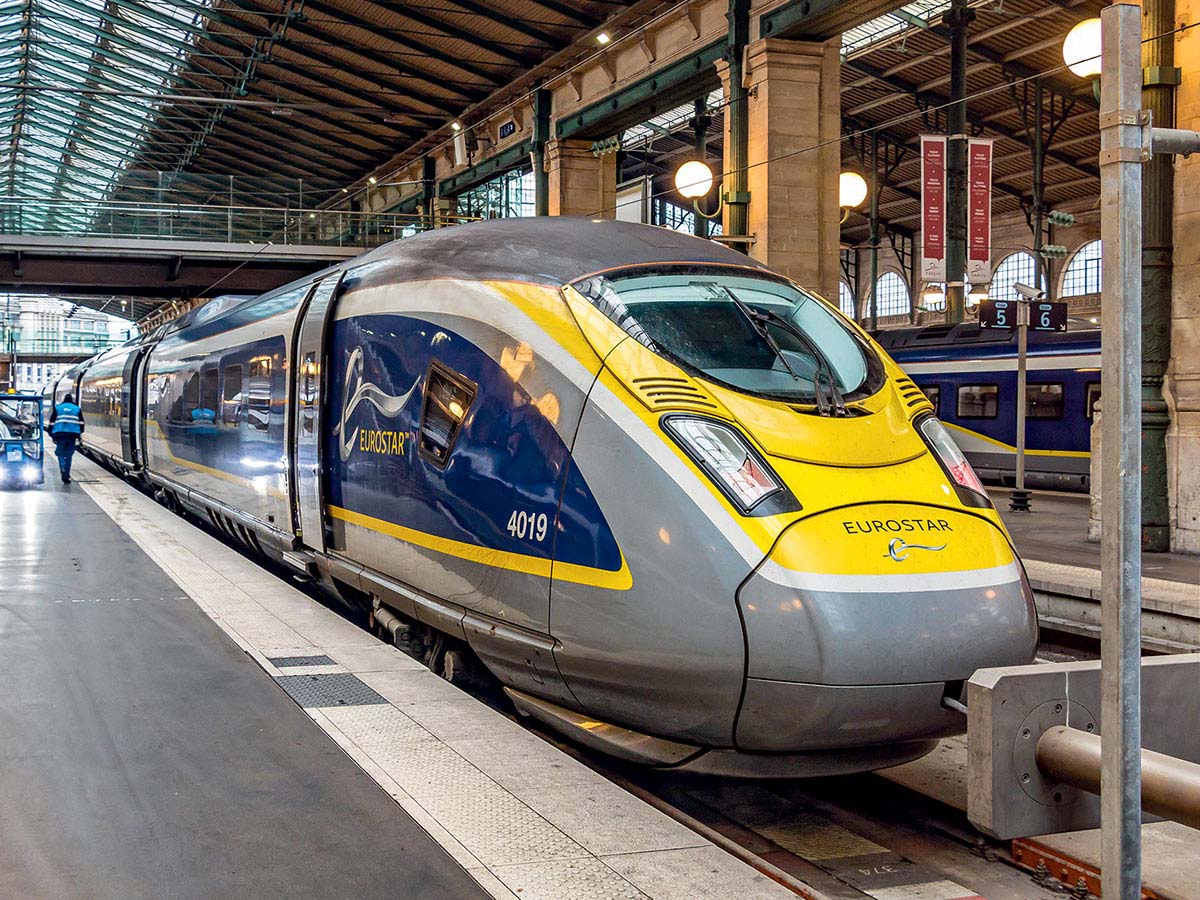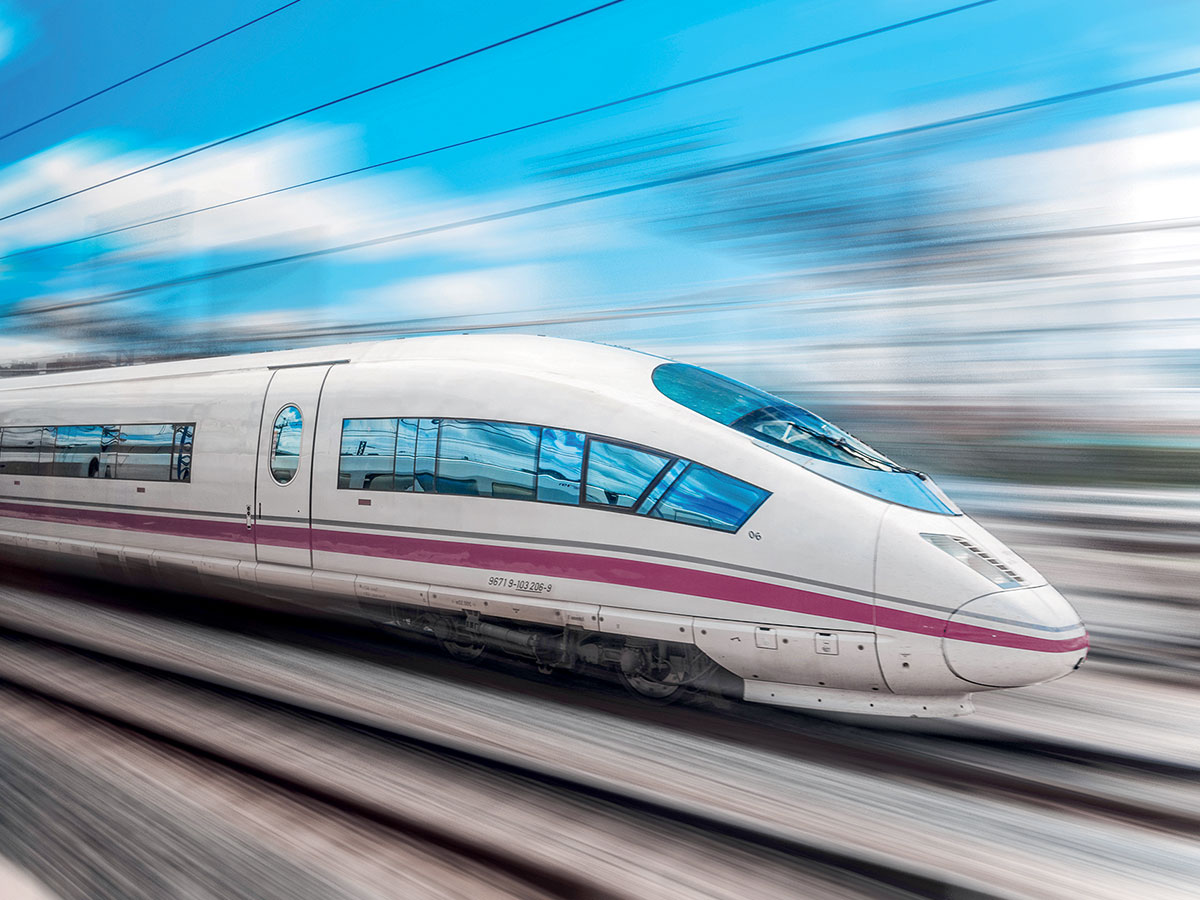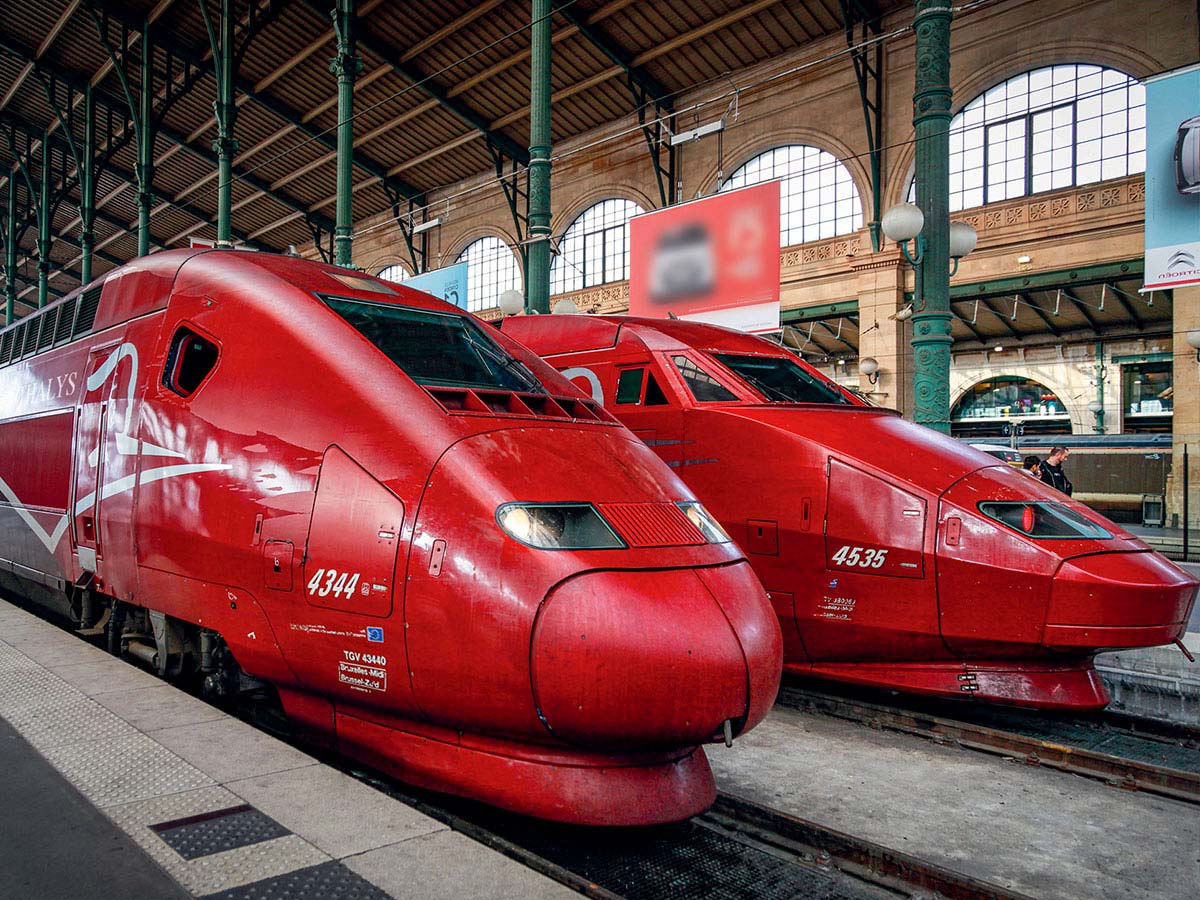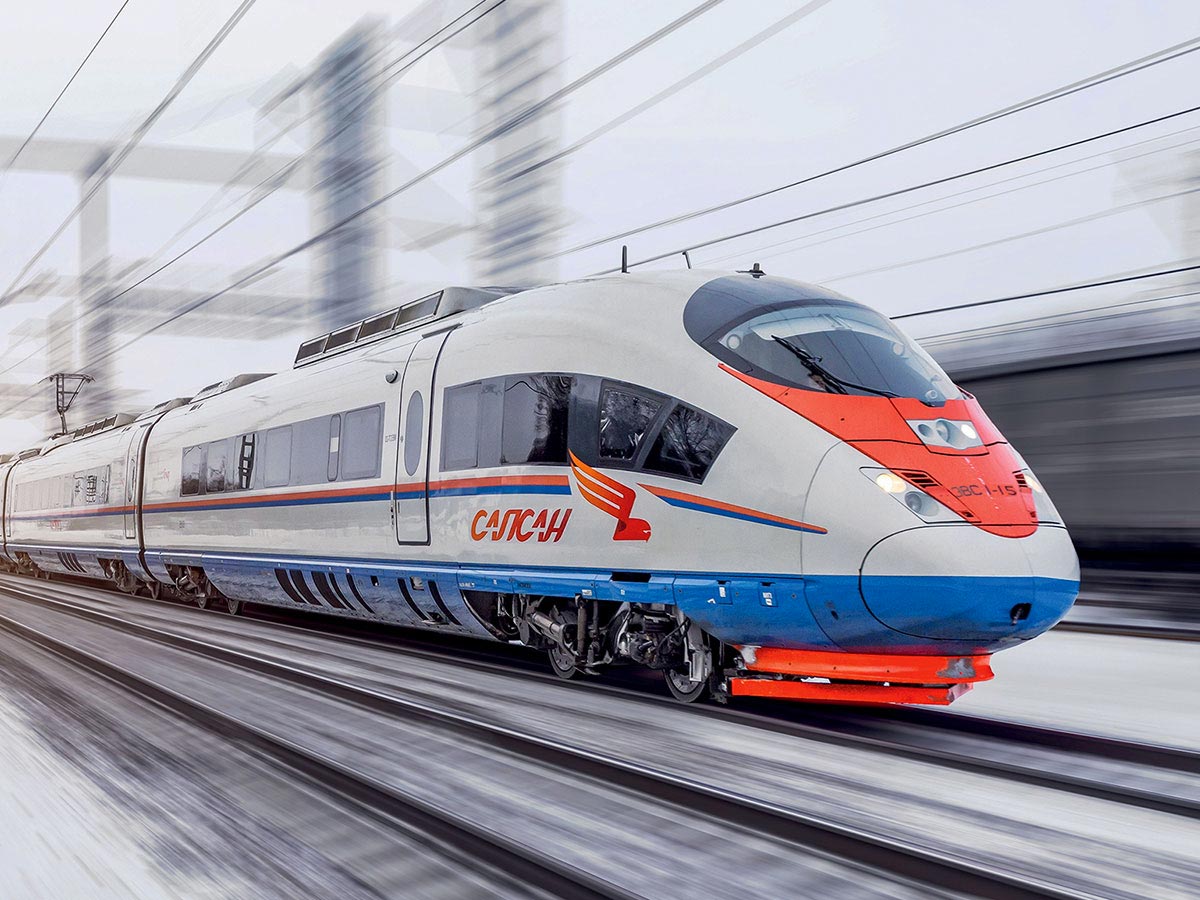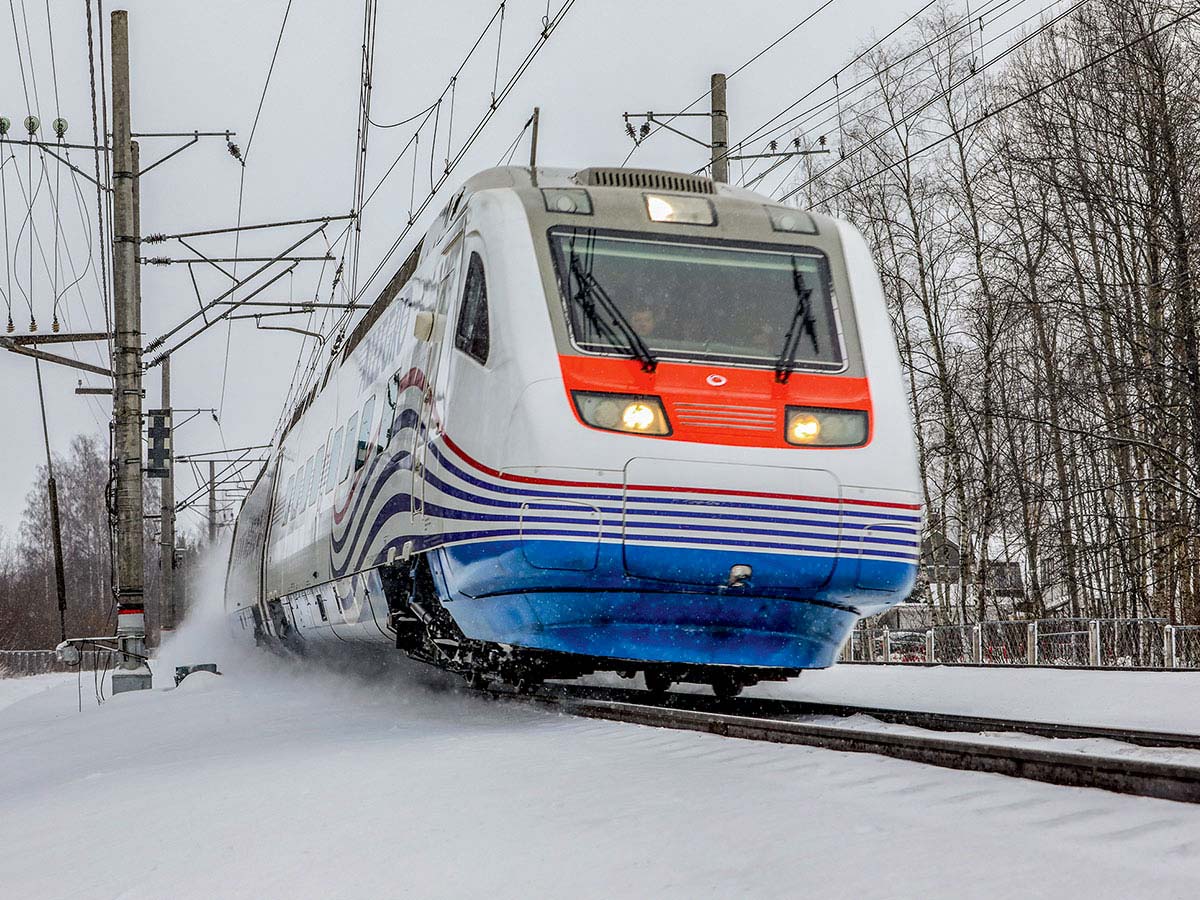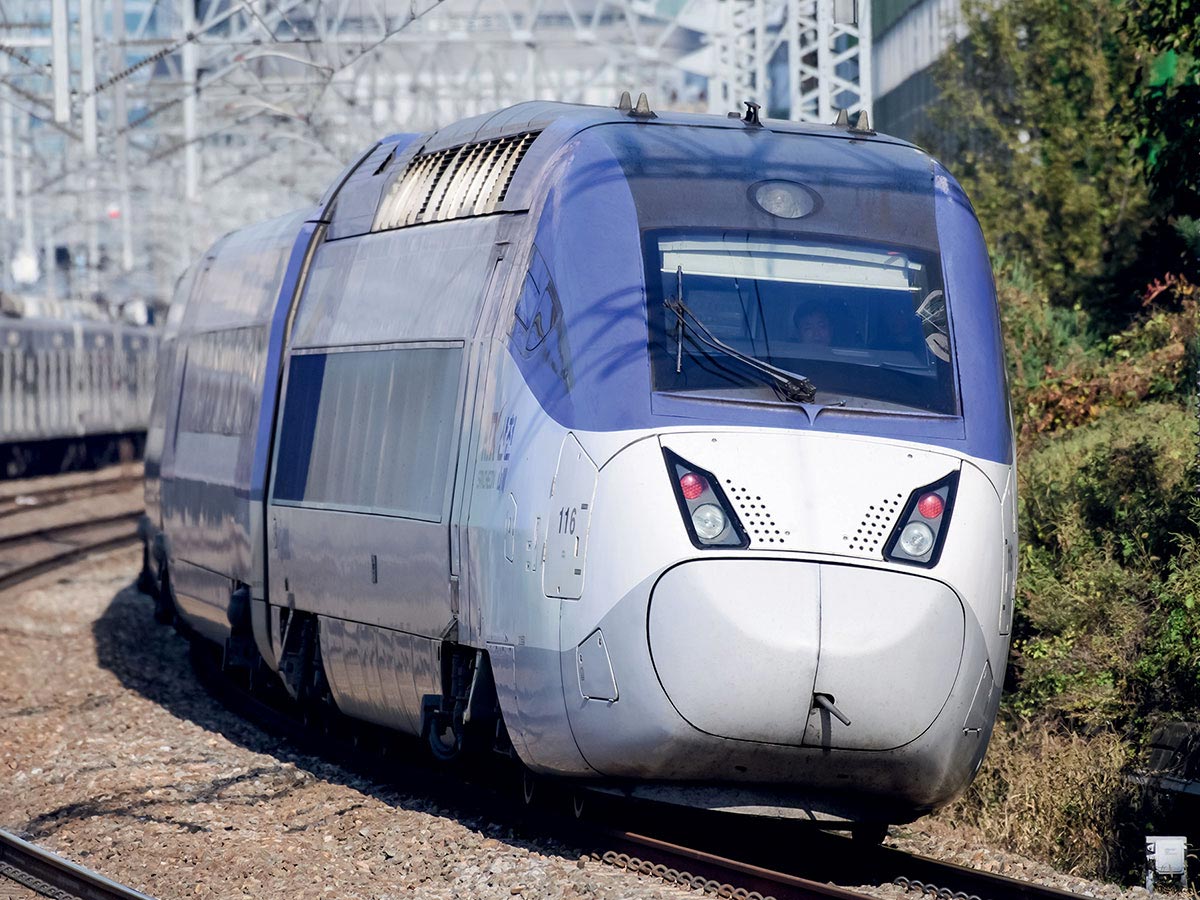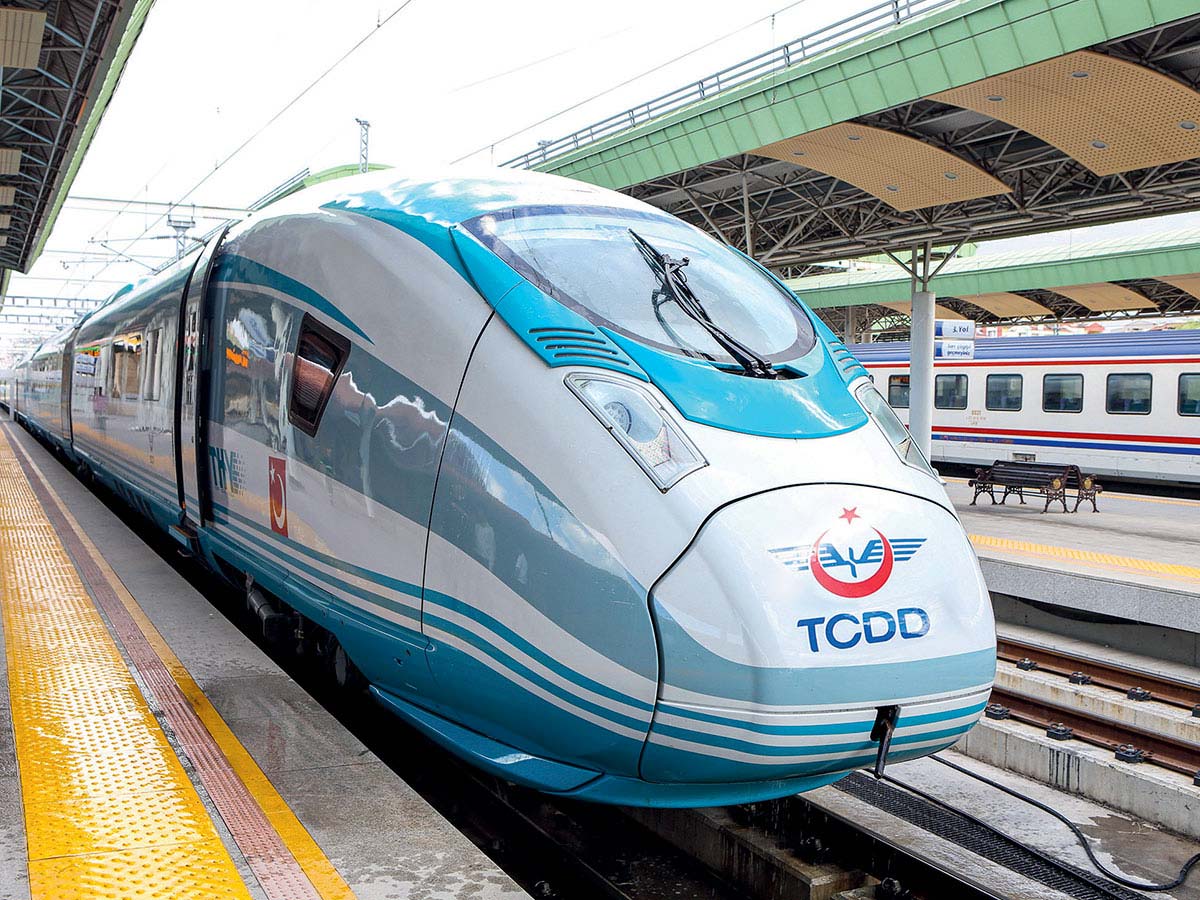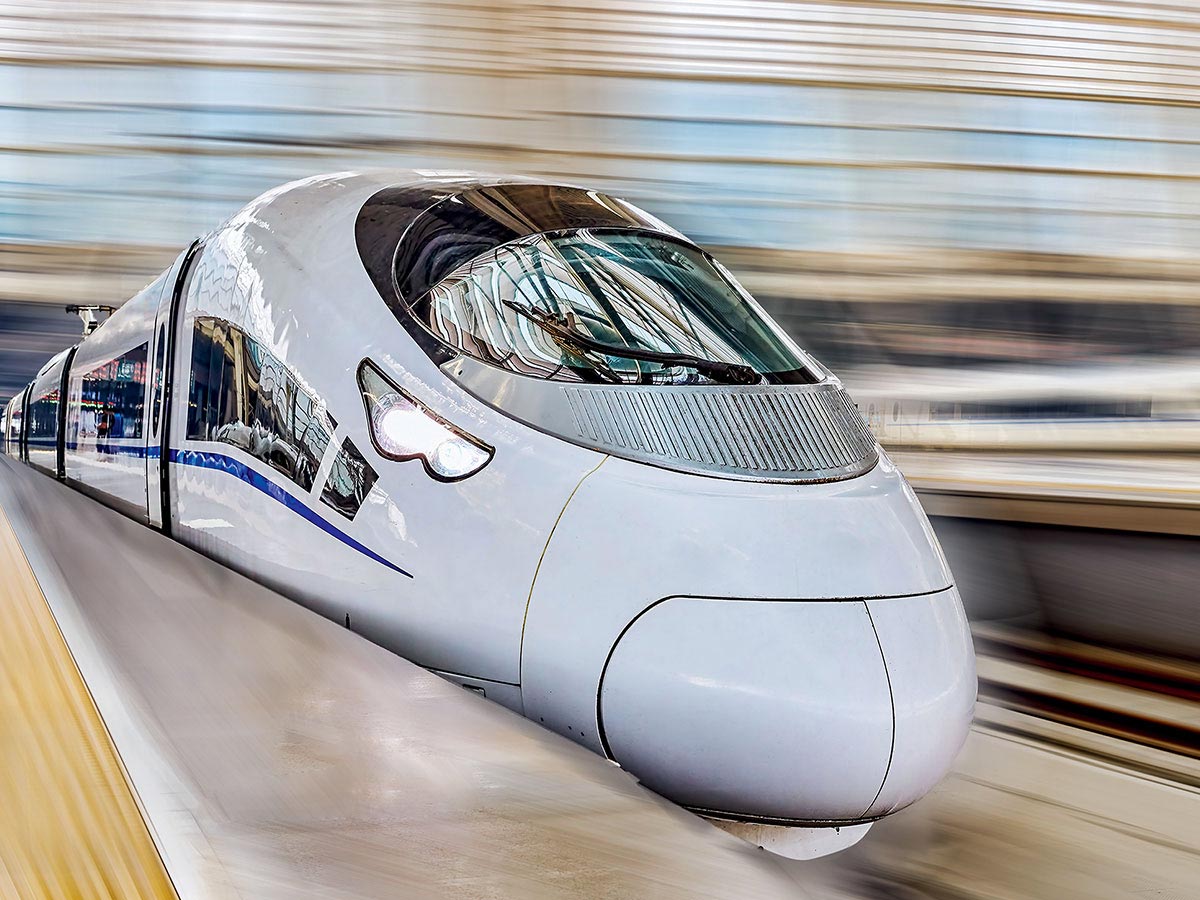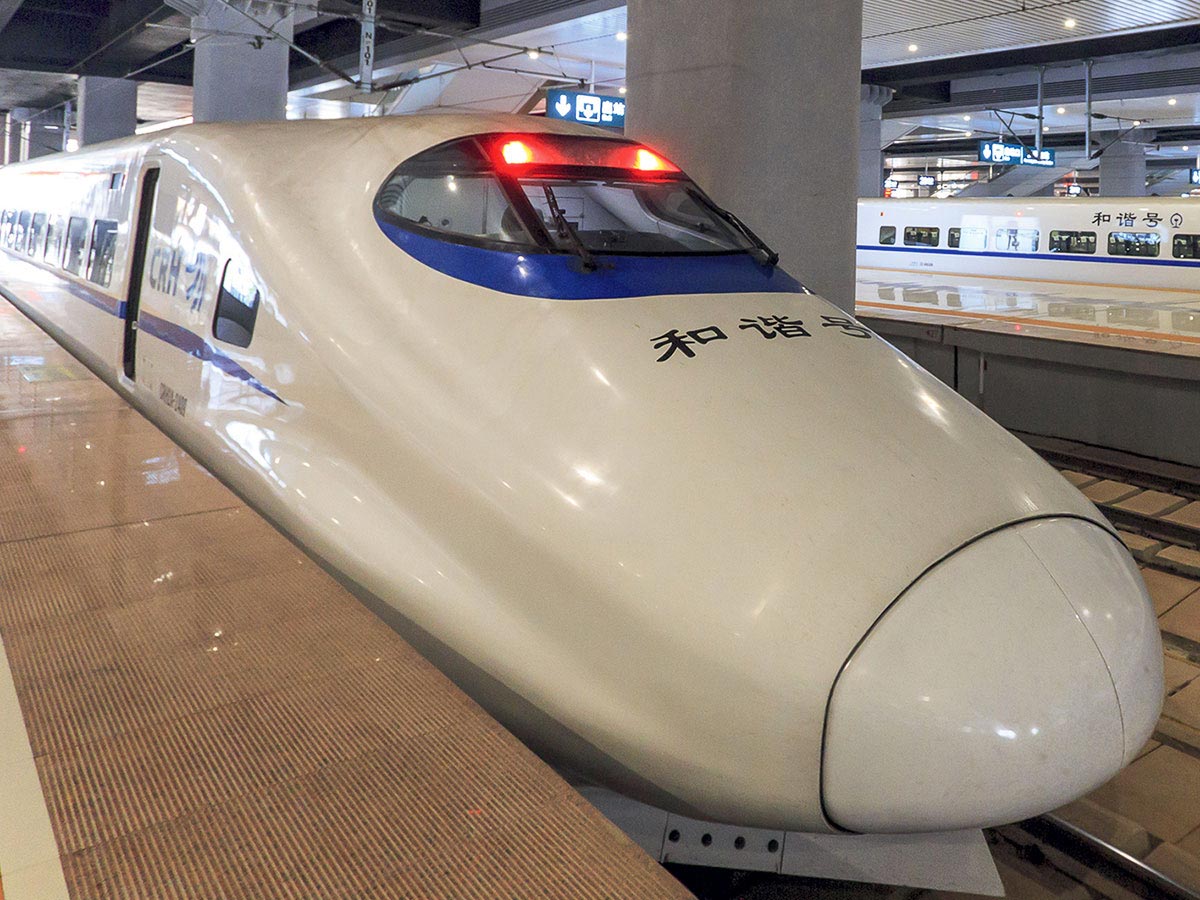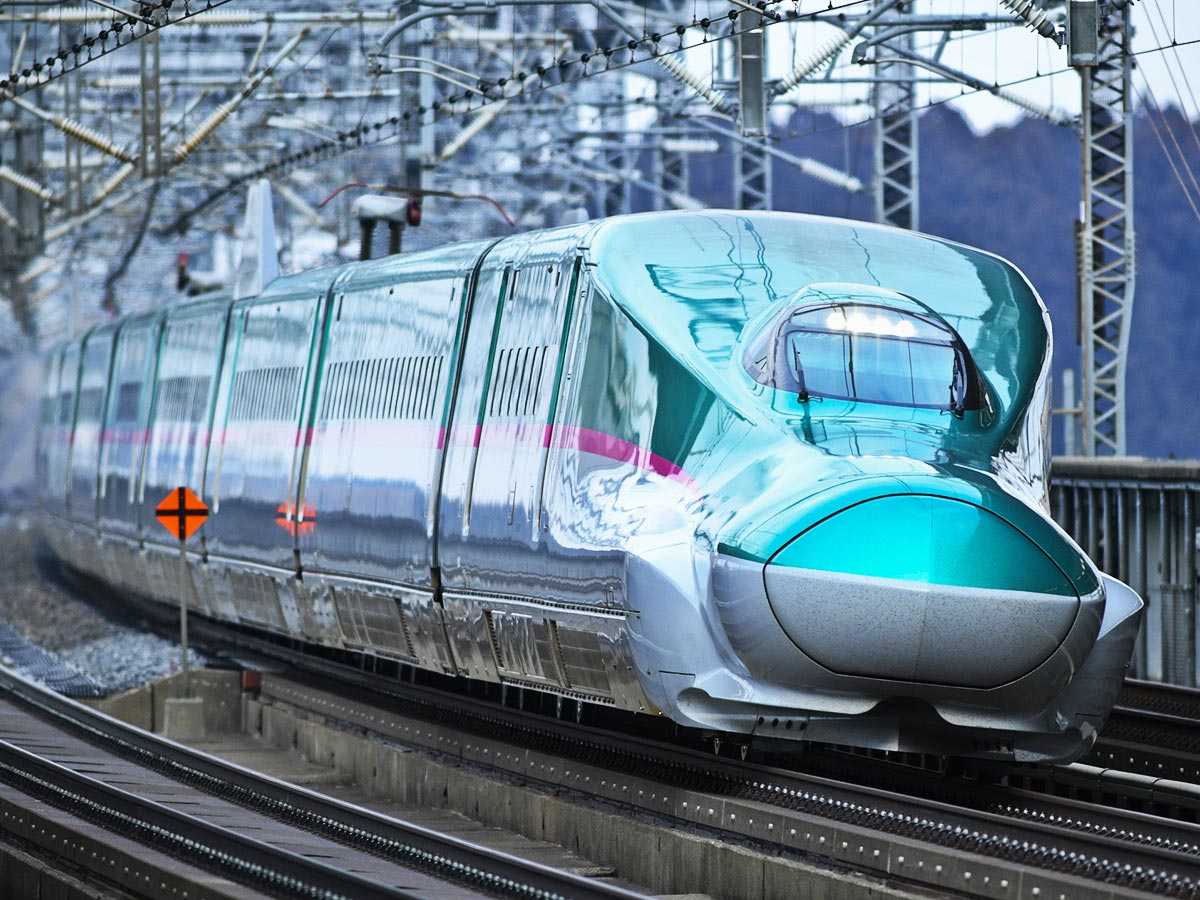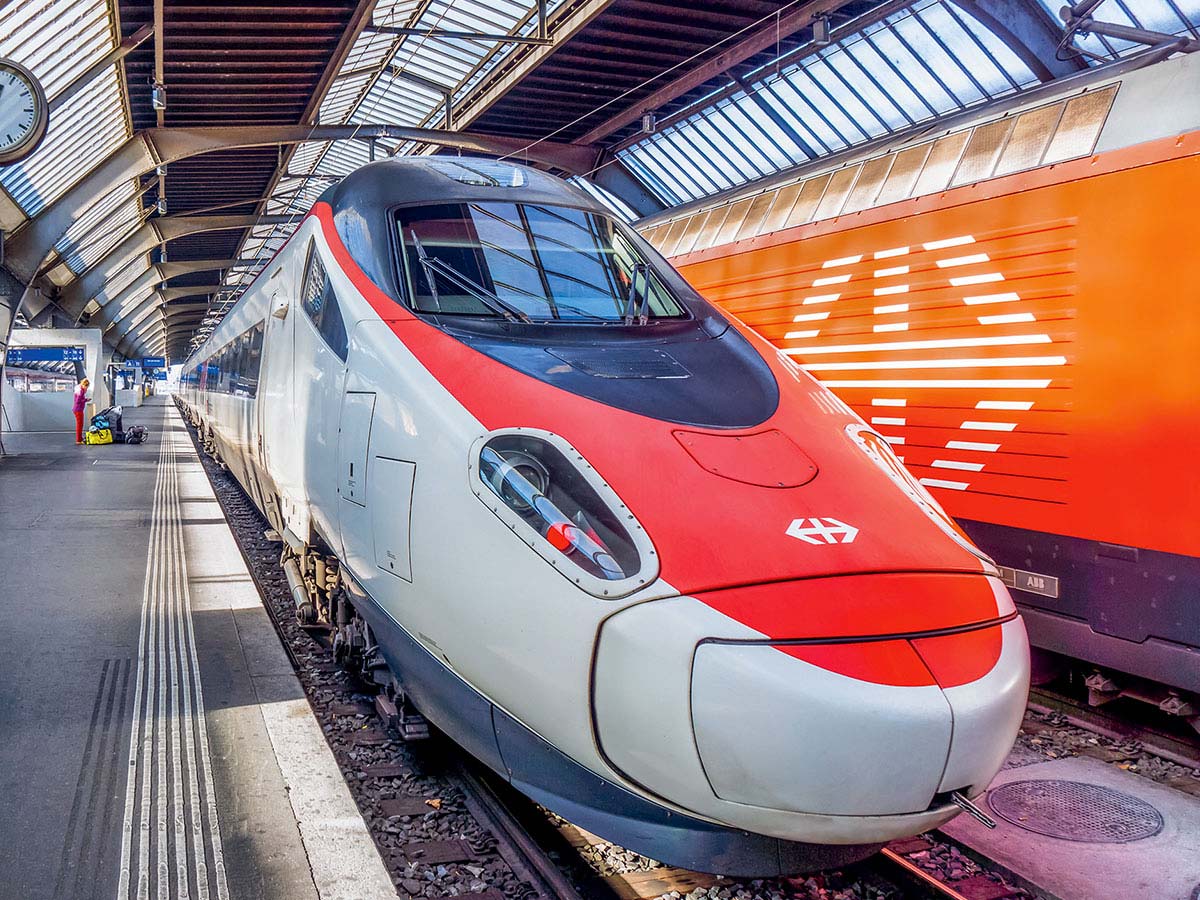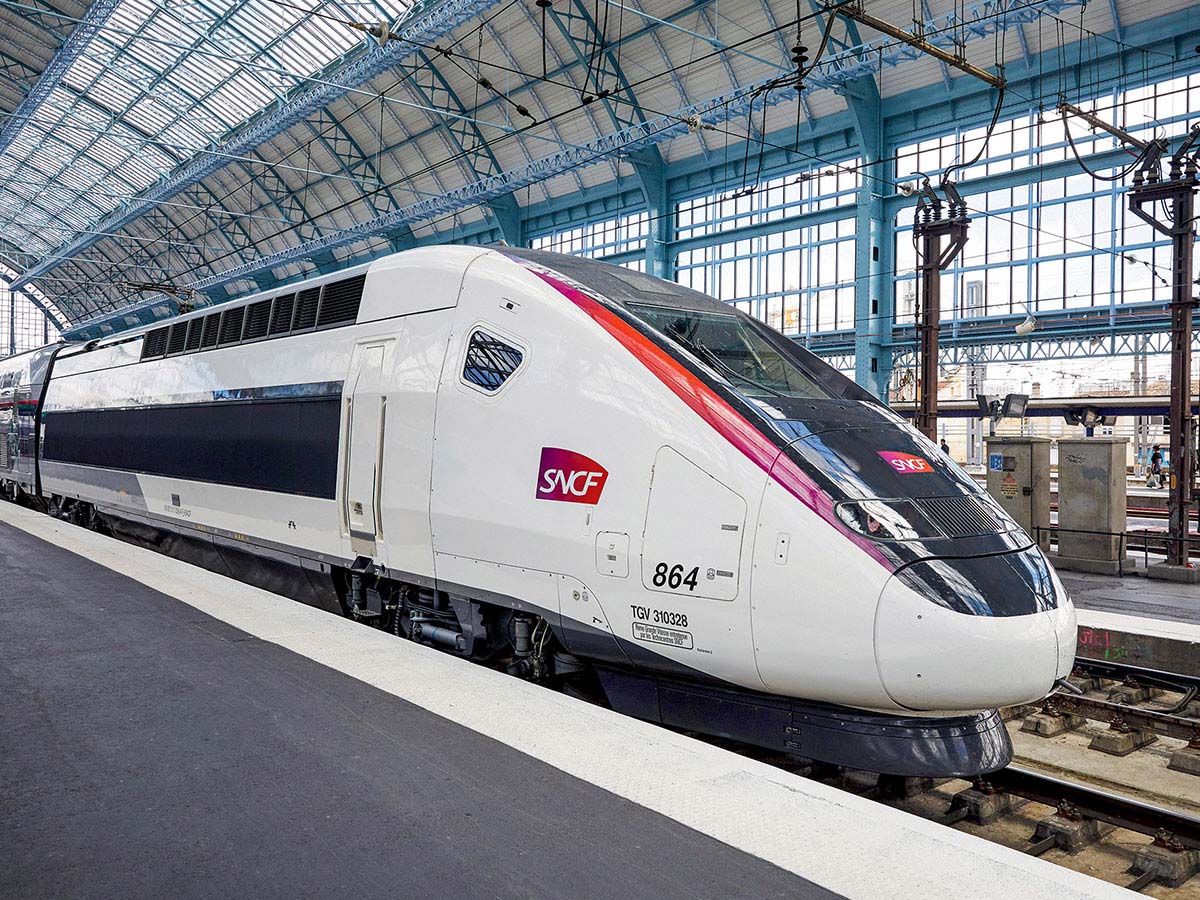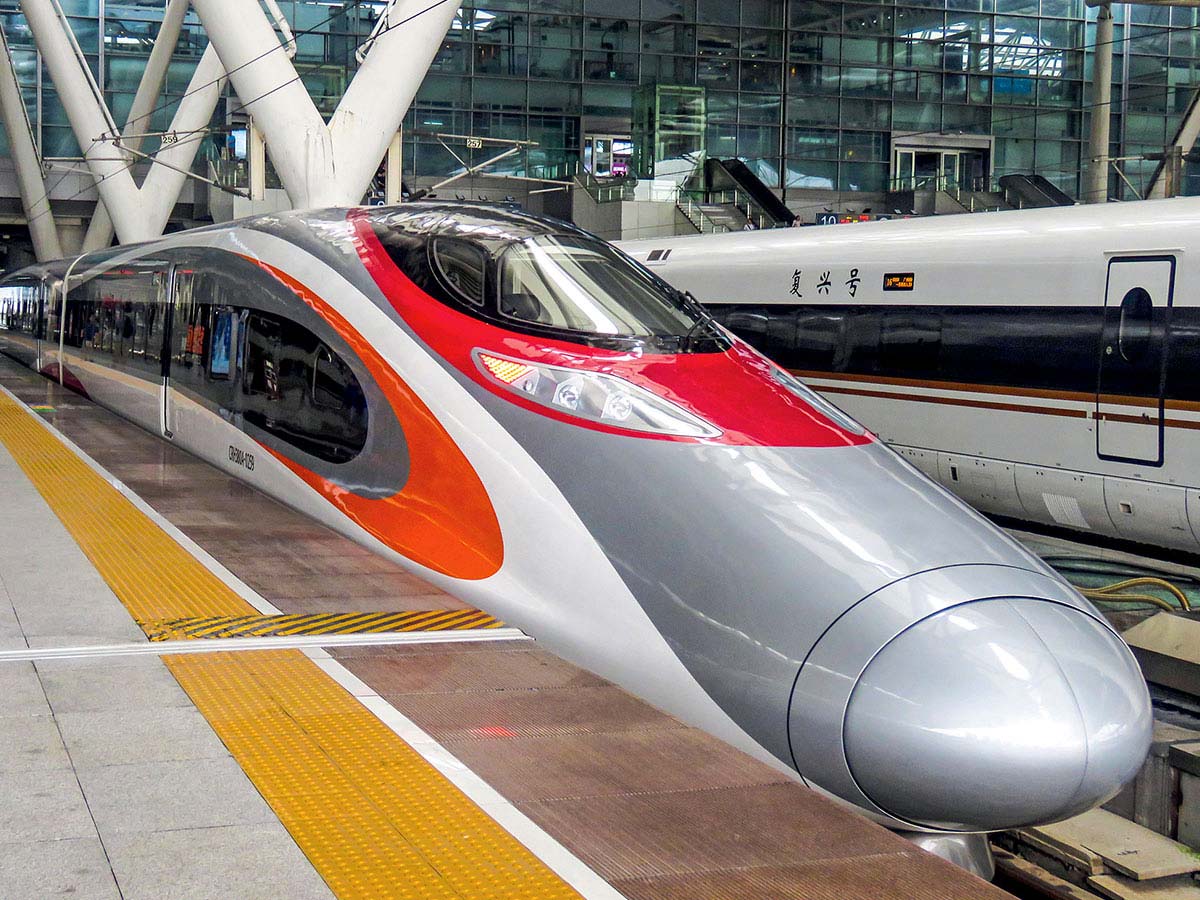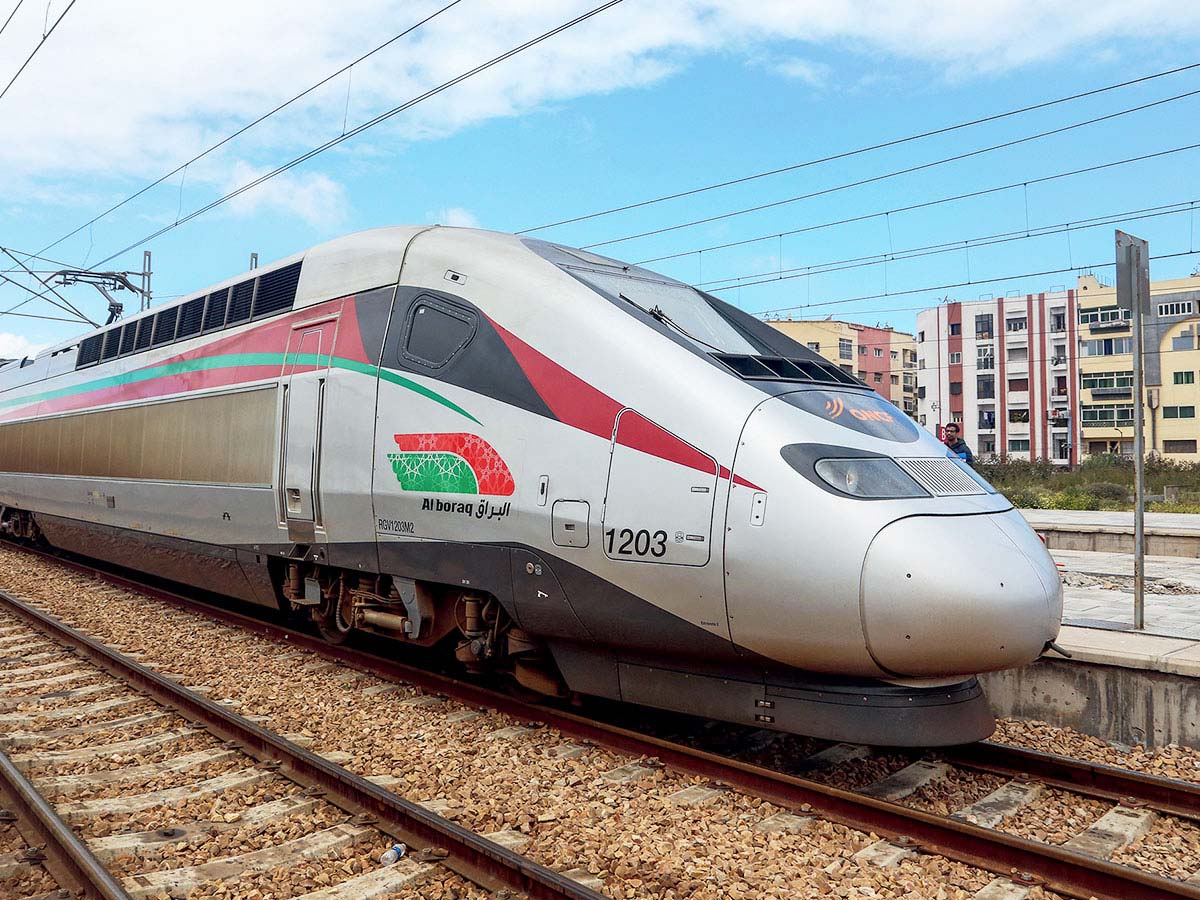BOSTON > WASHINGTON DC

2000 | United States
Journey

More Info
- Length in km: 734 km
- Name of the train: Acela Express
Boston, New York, Washington DC, the great cities of America’s East Coast evoke the image of a strong America, the promised land for British emigrants stepping off the Mayflower in search of a new life in the early 17th century. All three are economic, cultural, and political metropolises looking resolutely to the future, and each in its own way represents the history of the United States. Though the railway has been a powerful element of the mythical Wild West and American expansion, over the years it has not fared well against competition from air travel and that ultimate symbol of a post-war American way of life, the automobile. Today, thanks to the Acela Express, which travels the 734 kilometres between Boston and Washington several times a day, rail transportation has earned back its stripes. Known as the Northeast Corridor, this line serves the most populated region of the US, and is the only high-speed line currently operating on American territory.
Leaving Boston
In 1620, early British settlers in search of the “New World” reached Plymouth, just south of Boston. This historic American enclave is the capital of Massachusetts as well as its economic and cultural centre. Winding through the downtown area is the 4-kilometre red line of the Freedom Trail, a footpath leading to sixteen major landmarks of the history of American independence. Boston is itself a mosaic of different neighbourhoods: the glass towers of the financial district; the shops and lively café terraces of downtown; the chic red-brick houses and gas-lit streets of Beacon Hill; the art museums and home of the Red Sox at Fenway Park; Chinatown; or, on the other side of the Charles River, Cambridge with its prestigious universities, Harvard and MIT, home to the country’s intellectual and political elite.
A few steps from downtown is South Station, terminus of the Northeast Corridor. The historic station was built in 1898, then renovated in 1989. The elegant entrance is curved, its many windows and colonnades typical of the region’s Neoclassical architecture. The station’s clock tower is a replica of Big Ben, and boasts the last mechanical clock in New England. Served by both the Acela Express and regional rail, the station also offers an annual programme of events, exhibitions and concerts.
Northeast Corridor
The exact term of “high-speed” first appeared in the US in the High Speed Ground Transportation Act of 1965. Four years later, the express train known as the Metroliner began to shuttle between Washington D.C. and New York at a maximum speed of 200 km/hr. In the 1980s, five separate potential high-speed lines were identified, but at that time investments for rail were far inferior to those dedicated to motorways and air travel. At its origin, the Northeast Corridor, which today connects Boston to Washington, was in fact a series of lines built and operated by various companies that would eventually merge together. Amtrak, the state-owned American passenger railway company, was created in 1971. The company acquired the majority of these lines, which it now shares with privately-owned freight rail companies. In the 1990s, Amtrak took on the challenge of transforming the Boston-Washington DC route into a high-speed line, and sought bids for a faster train. A consortium created by French company GEC-Alstom and Canadian company Bombardier was awarded the commission. In 2000, the first Acela Express trains began to operate at commercial speeds up to 240 km/hr.
Boston-Washington DC, the journey
The train leaves Boston and the wild beauty of the Massachusetts coast behind. Following its route through the smallest American state of Rhode Island, the train passes through green countryside to its capital city of Providence. Located at the edge of Narragansett Bay, this pleasant city’s cobblestoned streets are lined with Victorian houses. The line continues along the coast of southern Connecticut. Travellers frequently stop off at Mystic Seaport, an old shipbuilding centre transformed into a must-see seaside destination. Today this port town has become a living museum, with its charming homes, shops, and boats, including a 19th century whaling ship. Bordering the protected waters of Long Island Sound, the train runs past New London, formerly one of the region’s most important whaling ports.
In New Haven, visitors can appreciate the Yale University campus, with its Victorian brick houses and Neo-gothic stone buildings, museums, and art galleries. The train stops next at New Rochelle - a city founded by French Protestants who bestowed its name - with its parks, small islands, forests, and fields. Continuing its path, the train pulls into Penn Station in downtown Manhattan, the most emblematic borough of New York City. And on through New Jersey, whose landscapes vary from fields and pine forests to high-tech cities. The line cuts across a corner of Pennsylvania to reach Philadelphia, a vast yet intimate-scale city offering visitors an old town replete with charming squares and cobblestone streets. This former capital of the New World brims with museums that bear witness to the city’s role in the Revolutionary War: it was notably here that the American Declaration of Independence was signed in 1776. Further south, the peaceful Delaware city of Wilmington is a perfect base for visiting the Brandywine Valley, whose exceptional botanic gardens, parks, great houses and historic landmarks are reminders of America’s past. A long tunnel announces arrival at Baltimore, Maryland. This East Coast port city offers a charming seafront and the attractive Inner Harbor, a 1970’s-renovated complex that includes, among other attractions, the maritime museum as well as an aquarium housed in a pyramid of glass. Baltimore has its own Penn Station. Built in Beaux-Arts style in 1911, it is unmistakeable, thanks in part to the immense aluminium sculpture, Male/Female, that looms over the esplanade. A last stop at Baltimore-Washington Airport (BWI) before the final stop at Union Station, in Washington D.C.
→ Acela Express train leaving New London Station.
A well-adapted line
The Acela Express shares the conventional Boston-Washington DC line with freight trains that run during the night. Despite multiple renovations, including electrification of the entire line, the exploitation of high-speed transportation along the Northeast Corridor remains limited by the historic 19th century-built network and a route that passes through conurbation areas with the highest density in the country. Indeed, though the Acela Express trains are capable of travelling at speeds up to 240 km/hr on the Boston-New York section, rail speeds average a mere 132 km/hr on the remaining sections of track. Among the major engineering works along the line, Hell Gate Bridge is one of the oldest. Erected at the beginning of the 20thcentury, the emblematic bridge is known for its elegant red steel arch framed by two towers. Hell Gate’s three tracks span 310 metres across the East River to connect Queens to Wards Island, part of the borough of Manhattan. The Hell Gate Bridge has inspired architects in the construction of bridges in Sydney, Australia as well as Newcastle and Gateshead in England.
Amtrak
Amtrak draws its name from the contraction of the words “America” and “track”. The Northeast Corridor is one of the most important parts of its network, representing one third of overall revenues. The company employs a staff of over 20,000 people. The national railway network extends over approximately 35,000 kilometres and serves more than 500 destinations, travelling across the national territory through forty-six states.
Pending projects
In 2008, President Barack Obama sought to generate momentum for the development of high-speed in the US by promising significant federal investment over a five-year period. The objective was to develop trains that could reach maximum speeds of 350 km/hr. A strategic plan was adopted to provide a rail network that would connect major American cities, create employment opportunities and reduce greenhouse gas emissions. The project was launched in 2009, proposing ten new corridors, from California to Florida, with various sources of investment capital. Many of the concerned individual states, however, lacked the resources necessary to fulfil this presidential ambition, and chose to limit investment to the modernisation of existing lines. In 2010, Congressional Republicans voted to reduce the federal budget to exclude these new infrastructures.
→ Rail bridge over the Susquehanna River at Havre de Grace, Maryland.
Acela Express
The Amtrak brand of Acela derives its name from a fusion of the words acceleration and excellence. The Acela Express was put into service between Boston and Washington in 2000, and at the current time it is the only high-speed rail line in operation on the whole expanse of the American continent. Manufactured by Bombardier and Alstom working in consortium, the Acela has been adapted to the existing network, with a top speed of 240 km/hr on certain stretches along the line. The train is composed of two end locomotives framing nine railway cars designed for American gauges, which are wider than standard European gauge. A tilting system, developed by Bombardier, allows for higher speeds in sharp curves, while improving the comfort of passengers on board.
Blue is the colour of choice for the interior design of the cars. In first class, meals are offered to all passengers. In order to relieve the traffic saturation along the Northeast Corridor, a new generation of high-speed trains, the Avelia Liberty, will be put into circulation between 2021 and 2023. Commissioned in 2016 from Alstom, the 28 single-deck tilting trains incorporate an innovative tilting system that makes it possible to navigate curves at higher speeds. On certain sections of the line, these trains will run at nearly 300 km/hr. Travel times will thus be reduced, and service will be more frequent. Economic and lightweight, these train sets will consume less energy than their predecessors. Their two motors are compact, and equipped with an anti-collision structure to reduce force of impact.
→ An Acela Express train at Harrison Station, Newark, New Jersey.
New York, the half-way point
In the very centre of Manhattan, Penn Station is the hub of New York transport systems. This immense underground station, tucked under the Madison Square Garden complex, receives major lines as well as regional and metro lines. The destruction of the original 1910 rail structure in 1964 scandalised New Yorkers to the point that they immediately petitioned Grand Central to be listed as a historical monument, to ensure that it would not meet the same fate. The labyrinthine station becomes a hive of activity during rush hours. To help passengers find their way around the station, Amtrak offers the mobile application FindYourWay, a life saver for travellers on the go. Built in part on an archipelago anchored by the iconic Statue of Liberty, New York City is a not to be missed East Coast destination. People from around the world feel at home in this uniquely cosmopolitan city, residents and visitors alike. Eclectic, inventive, and festive, New York is a city of extremes and inexhaustible resources. The urban landscape of this city, with its endless grid of streets and avenues, is a source of constant amazement. Home to 150 museums, including the exceptional Metropolitan Museum of Art, the city is also a kingdom of shopping, contemporary art, business, and shows. Billionaires, students, bankers and bohemians live side by side, while Central Park, the city’s vast green space, keeps skyscrapers at bay behind rows of trees and parklands.
Arriving at Washington DC
The end of the line is Union Station, a beautiful building with the air of a Roman temple. Visitors can admire the luminous barrel-vaulted ceiling, colonnades and a series of arches that frame stone statues. The sumptuous interior décor privileges white granite, marble and gold leaf. Built in 1908 in the Beaux-Arts style, the station was completely renovated in 1988. Featuring a large shopping esplanade and movie theatres, the station offers a diverse programme of cultural events. Washington is the capital of the United States, a status reflected in its wide avenues, memorials, and green spaces. Not a skyscraper to be seen. There are two faces to this city.
The first, severe, is composed of major commemorative and state architecture: The White House, the Capitol that dominates the city and, at its feet, the world’s largest book collection, the Library of Congress, as well as many national memorials in recognition of the founders and former presidents of the United States. The second face is less formal, with the bohemian neighbourhoods of Adams Morgan and Dupont Circle, the cobblestoned streets and elegant Georgetown, welcoming bars and hip nightspots. For any visitor to Washington, a stroll along the Mall is not to be missed. This sweeping, tree-lined avenue is a 3-kilometre walking path that leads from the Capitol to the Lincoln Memorial, and home to the most prestigious museums of the city.
Rail vs. air
The Boston-Washington DC line is heavily travelled, at a rate of fifty trains each day. The Acela Express has made it possible for the American railway to once again compete with air and road travel. Frequent scheduling and shorter travelling times have motivated many passengers to choose the rail over flights. Between New York and Washington, rail transport has today captured a 75% market share, leaving only 25% to air travel. One can only hope that the major rail investment plan - intended to build a truly high-speed line along this axis for the year 2040 - will come to fruition.
a selection of HIGH-SPEED LINES by creation date
1964

TOKYO > OSAKA
1992

TURIN > NAPLES
1992

MADRID > SEVILLE
2002

COLOGNE > FRANKFURT
2008

BARCELONA > MADRID
2010

SEOUL > BUSAN
2011

BEIJING > SHANGHAI
2014

ANKARA > ISTANBUL
2014

LANZHOU > URUMQI
2016

SHANGHAI > KUNMING
2016

TOKYO > HAKODATE
2016


ZURICH > MILAN
2018

BEIJING > HONG KONG
2018

TANGIER > CASABLANCA
